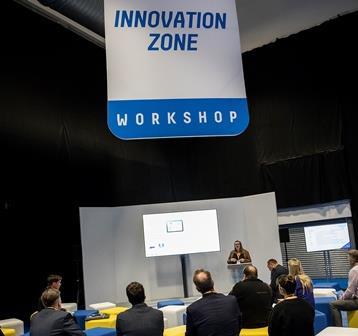
At an Innovation Workshop held ahead of the conference delegates heard some truly frightening statistics on the potential number of dangerously drivers at risk of sleep disorders – and some ways of detecting and solving the problem.
David Lee, clinical director of Sleep Unlimited, said that up to 1.5 million people in Britain could have obstructive sleep apnoea (OSA), in which their breathing is so badly disrupted during sleep that they wake frequently and feel constantly tired during the day. Only a third of these have however been diagnosed and are being treated, and it is estimated that there could be 40,000 fewer road traffic collisions (RTC) in Britain if the other million sufferers were found and treated. Professional drivers are five times more likely to have an RTC, Lee said, because they drive more on “boring” arterial roads.
The problem is that if diagnosed HGV drivers must tell the DVLA and risk losing their licences for three months from the time their symptoms are controlled, which means they could be off the road for up to 12 months depending on the speed of treatment in their local area.
“So they are reluctant to seek help,” Lee said. “But driving tired is driving dangerously.”
He urged employers to use a simple questionnaire called STOP BANG on their drivers to encourage diagnosis and treatment.
S – snoring; T – tired; O – obstructed breathing; P – (high blood) pressure; B- BMI (overweight); A – age (over 50); N – neck size (over 16in for men); G – gender (male at more risk).
Score one point for each positive answer and if the total is over five then there is a high risk of OSA. The next step is to monitor overnight blood oxygen levels for a week and if this shows low levels treatment should be sought immediately. “This process means drivers get treatment in weeks not months,” said Lee.
Machine vision
Another method to detect tired, and distracted, drivers is the Guardian machine vision driving-facing camera from Seeing Machines. The company’s European business development director Alistair Protheroe said it could detect symptoms of fatigue and distraction such as yawning, eyes closing and looking away from the road and alert both the driver by vibrating the seat or dashboard displays and the transport manager by messaging.
“Drivers are often not aware they are sleeping,” said Protheroe.”We have seen a 93.6% reduction in fatigue events with Guardian. “Once drivers are aware someone knows they are driving tired they will often self-medicate.”
Results from UK hauliers have shown that fatigue levels are flat across the day and drivers can doze off just half an hour into a shift. Symptoms can be worse after a big meal.
Protheroe stressed that operators must have a planned procedure in place for what will happen if drivers are found to be tired before fitting Guardian. “Try to involve the drivers’ families,” he advised. “They will often help improve the driver’s sleep and rest patterns.”
Alcohol testing
As well as tired drivers, operators should also take a proactive approach to ensuring drivers are not impaired due to alcohol. Claire Hopper, national sales manager at Alcodigital, said that just having a zero-tolerance policy was not enough. “You also need to enforce it with random testing,” she said. “What is the ideal sample – everyone, every day!”

Hopper demonstrated at quick, cheap and easy device to test drivers – or any staff - before they start their shift. The Alcosaber is a handheld instrument that only requires a member of staff to blow onto a sensor, so there is no need to change mouthpieces for each test. It just takes a couple of seconds to show a green or red light indicating a pass or fail, with the threshold for a fail being set depending on the company policy. The legal limit is 22 micrograms per 100 millilitres of breath in Scotland and 35 in the rest of the UK.
The Alcosaber costs just £295 exc VAT and is powered by a single AA battery, making it cost effective to buy and use. It needs calibrating every 5,000 tests.












